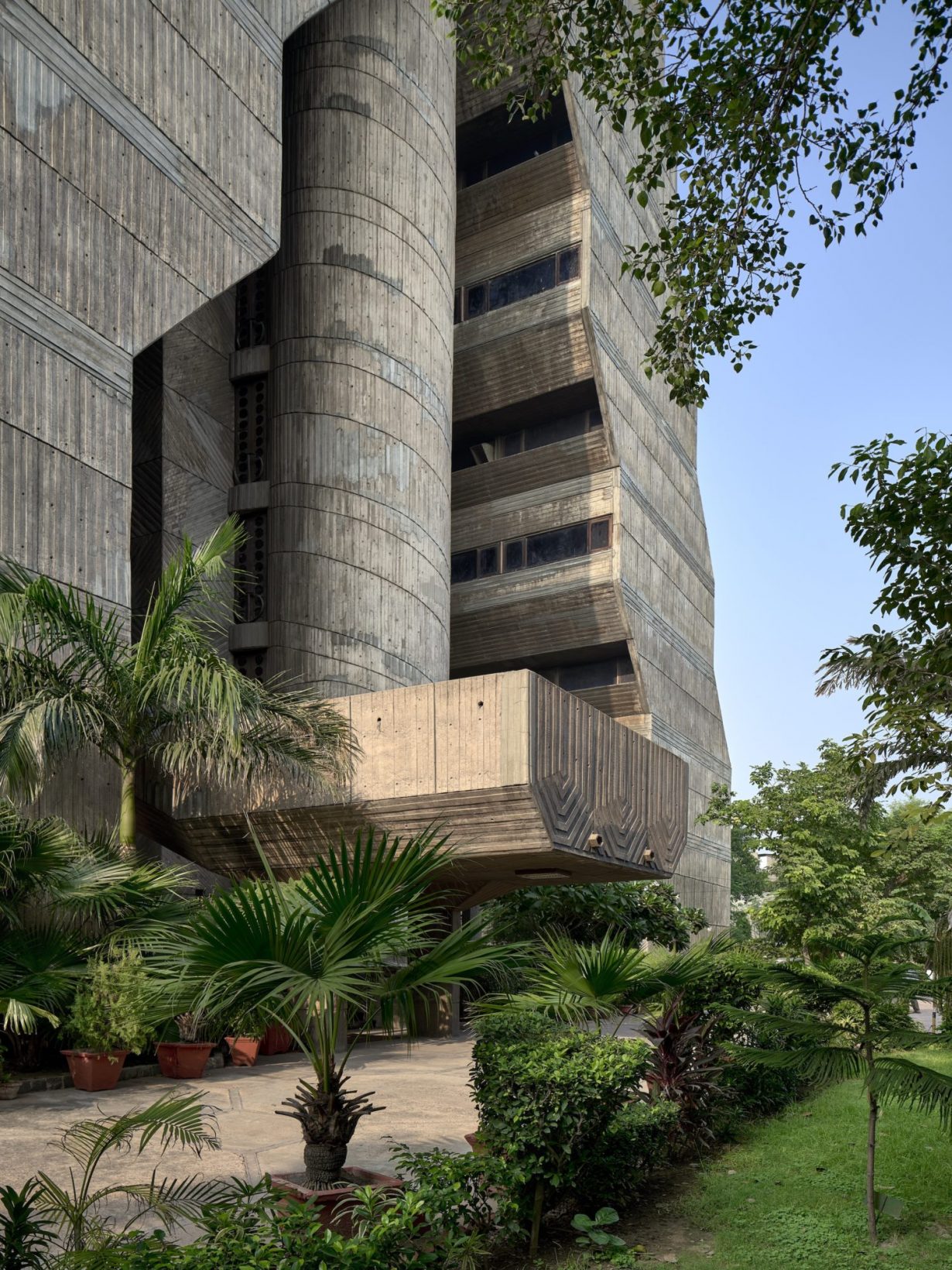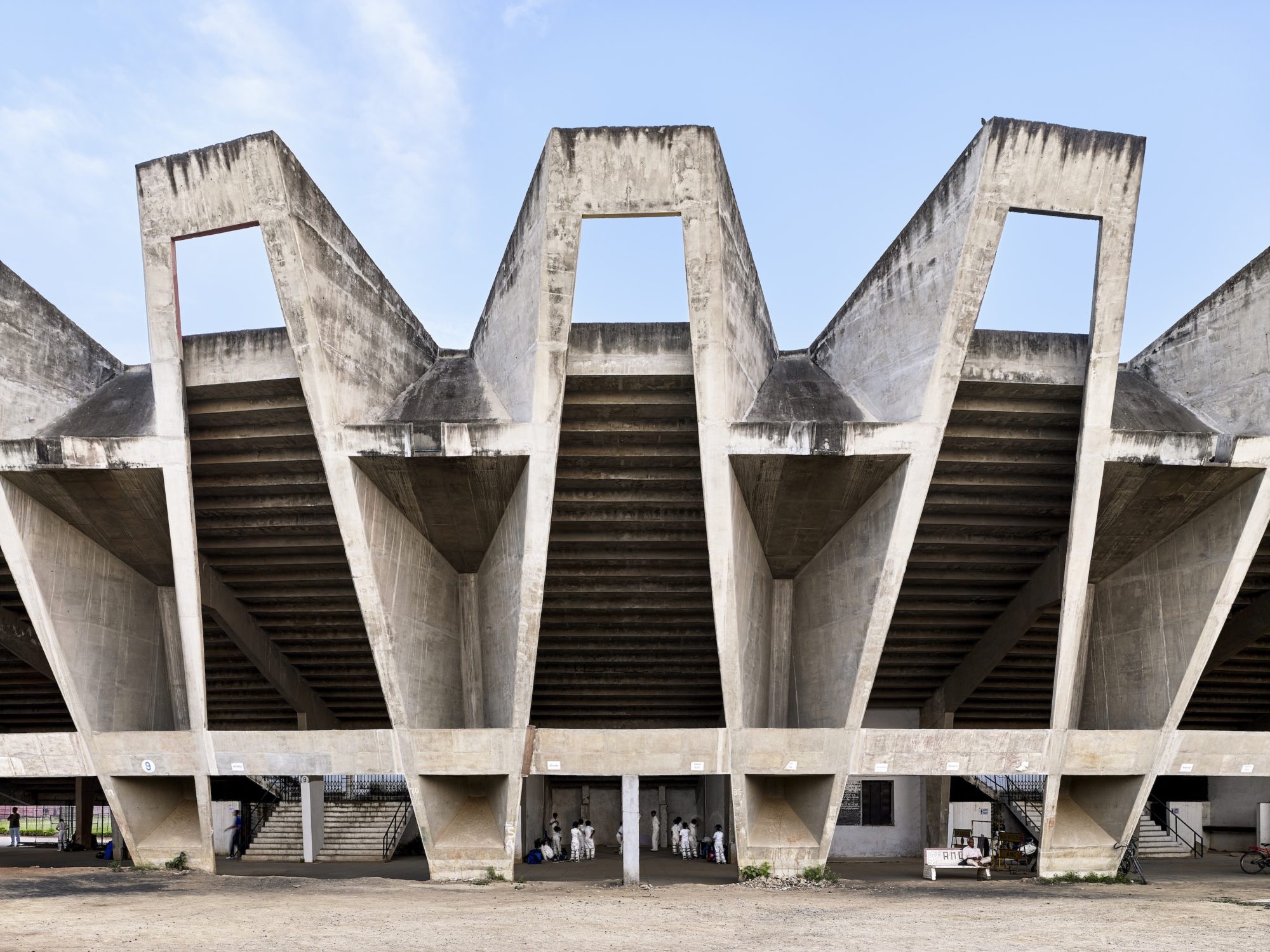The Project of Independence at MoMA documents modern architecture across Bangladesh, India, Pakistan and Sri Lanka
MoMA’s eye-opening exhibition documents modern architecture across Bangladesh, India, Pakistan and Sri Lanka via more than 200 models, sketches and audiovisual materials. The earliest projects were realised at the end of the British Raj, the most recent for the 1985 South Asian Games, held in Dhaka. While the influence of celebrated Western architects such as Le Corbusier and Louis Kahn is on display when the exhibition deals with government buildings, where the show really vibrates is in presenting South Asia’s mid-century architectural boom not as a West–East confluence but a homegrown, at times grassroots, endeavour. So whereas in certain projects the raw concrete (béton brut, which gave name to brutalism, a late-modernist movement that evolved out of the work of Le Corbusier) afforded the monumental scale for projecting the long-term, future-gazing ambitions of newly formed independent nations, in others the same concrete, exposed brick and local materials served a more immediate socioeconomic function, addressing the dire refugee and housing crises triggered by Partition, in 1947, in which 13 million people were violently displaced.
The architects highlighted here combined breakthrough techniques, such as Le Corbusier’s brises-soleil, with traditional elements, for example inner courtyards, to provide solutions uniquely fitted to hot climates and local social needs. In the monumental vein, Raj Rewal’s Hall of Nations and Halls of Industry in New Delhi (1970–72), designed to celebrate 25 years of Indian independence, exudes a technological confidence while remitting to a cosmic order. Water, as a harmonising element, and brise-soleils appear in documentation of Geoffrey Bawa and Ulrik Plesner’s Ceylon Steel Corporation Office Building, Oruwala (1966–69); dramatic punctured grids in Balkrishna V. Doshi’s Indian Institute of Management, Bangalore (1977–92); and turbulent curvatures in Daniel C. Dunham and Robert G. Boughey’s Kamalapur Railway Station, Dhaka (1968). The College of Arts and Crafts, University of Dhaka (1953–56), by the father of Bengali modernism, Muzharul Islam, integrates curvilinear flow, floating stairs, pilotis, louvres and delicate terracotta jalis (latticed screens). Islam’s compact brick structures at Chittagong University, and Achyut Kanvinde and Shaukat Rai’s squat ones in Maharashtra, are prime examples of local architects adapting to inclement terrains and fickle ecosystems, from hilly forests to monsoon-stricken plains.

With a roof that references ancient lunar observatories, the Parthenon, Hindu temples and modern cooling towers, Le Corbusier’s Palace of Assembly at Chandigarh (1951–62), part of a complex for Punjab’s capital, is prophetically new, yet timeless. It exemplifies the Swiss architect’s fluidity between European and Asian regionalism: the rugged concrete hollowed out by deep shadows and strict geometries broken by a wavy parasol setting up dialectical textures. But the project also embodies the inherent contradictions of utopian urban planning. As stressed in a clip of Alain Tanner’s 1966 documentary, Une ville à Chandigarh, the complex was “carried on the heads of women”, seen toiling under endless baskets of heavy concrete. Built by workers who did not live in it, and ill-fitted to local cultures of mixed use, this segmented ideal city exposed the limits of the era’s progressive urbanist schemes.
Despite the shortcomings, South Asia’s modernism was an inspiring creative incubator. In affordable housing, modularity became functional, and practical concerns, such as communal spaces, replaced the idealised attempts at harmony. Notable in this section of the exhibition is the community-centred work of the British architect Laurie Baker, who settled in India: several hand-drawn pamphlets, such as ‘Are Slums Inevitable?’, demonstrate the ways in which he made his progressive ideas accessible. Among expandable-nuclei constructions are Rewal’s Asian Games Village in New Delhi (1980–82) and Charles Correa’s Belapur Incremental Housing in Navi Mumbai (1983– 86). Mostly absent in civic and governmental engineering, the South Asian pioneering women architects – Yasmeen Lari (Pakistan), Minnette de Silva (Sri Lanka) and Hema Sankalia (India), the last with a modular 50 Bed Women’s Hostel, in Ujjain, Madhya Pradesh (1979–80) – are prominent in the housing section. In a regional ethos, de Silva combined concrete and brick materials with terracotta, and favoured traditional woodwork, mats and ornamentation; meanwhile Lari and Sankalia built boxy housing around inner courtyards and rooftop terraces, blending radical modern design with traditional local vernaculars.
The Project of Independence touches on the complexity of urbanist utopias, whose legacies – and survival – are by no means guaranteed. Brutalist ruins can be shrouded in nostalgia, particularly as some iconic buildings come under threat from governments and commercial interests. Rewal’s colossal hall was demolished in 2017, despite protests by preservationists (a number of South Asian buildings by Kahn may suffer a similar fate). Yet far from single-mindedly enshrining brutalism, MoMA reminds viewers that, while brutalist monumental structures were often conceived by egalitarian, cosmopolitan elites, they’re inseparable from the histories of exploitation, social control and inequality.
